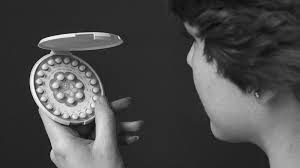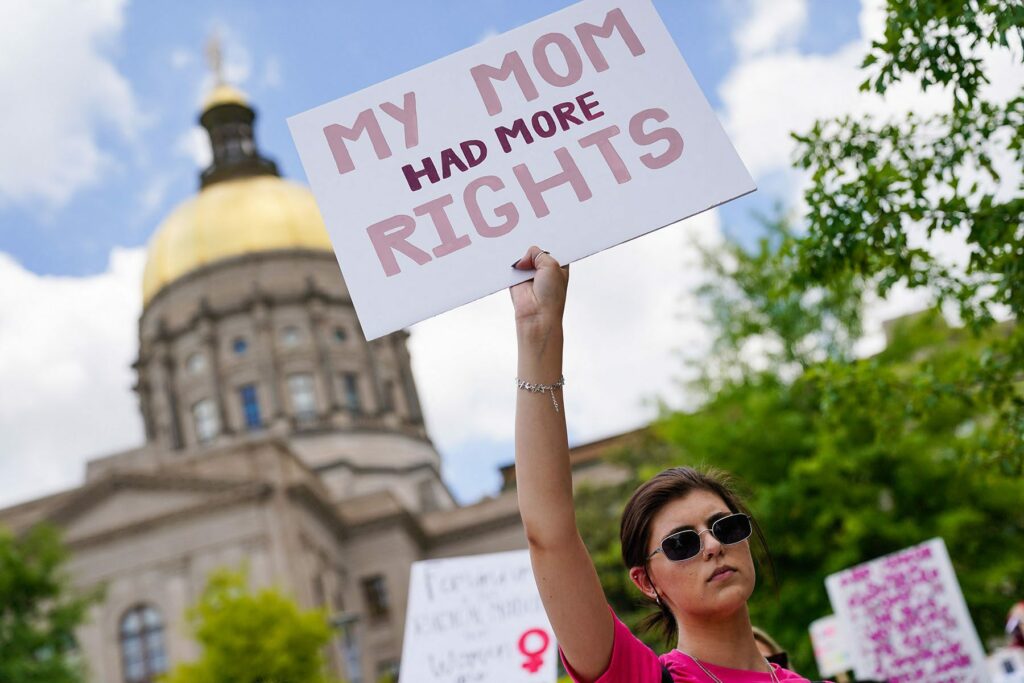
In 1965, the Supreme Court ruled that the banning of contraceptives was a direct violation to the right to marital privacy in Griswold v Connecticut. Prior to this ruling, it was considered a crime for a person to use any form of drug or article to prevent conception. The catalyst for this case happened after Estelle Griswold, the director of the Planned Parenthood League of Connecticut, and Dr. C Lee Buxton, a doctor at Yale Medical School, were arrested for providing illegal contraception [2]. Both professionals claimed that the law violated the U.S. constitution, thus initiating the Griswold v. Connecticut case of 1965. The case ended in a 7-2 decision in favor of the defendants [2]. Supreme Court Justice William O. Douglas exclaimed that the Bill of Rights creates a general “right to privacy” for the people, and he pulls from certain amendments to support his claim [1]. The amendments he cites are the First Amendment (free speech), Third Amendment (banned the quartering of troops), Fourth Amendment (freedom from searches and seizures), Fifth Amendment (freedom from self-incrimination), Ninth Amendment (protection of unnamed rights for the people), and the Fourteenth Amendment (requires states to provide due process and equal protection under the law to all their inhabitants) [1]. Through these amendments, it is evident that the people of America are granted fundamental rights without repercussions, including the right to privacy in intimacy and marriage, and banning the use of contraceptives is a violation of this right [5]. The legalization of contraceptives has had many positive impacts on individuals and families. According to the Planned Parenthood site, from 1960 to 2011, the percentage of women who completed at least four years of college multiplied by six, and the number of married women in the labor force nearly doubled in that same time [4]. Furthermore, Griswold v. Connecticut had more than just an impact on pregnancy prevention. Planned Parenthood also reported that 58% of all women who use the birth control pill use it for something other than pregnancy prevention, such as cramps, acne, or endometriosis (endometrial tissue growing outside the uterus) [4].
In Roe V. Wade in 1973, these same themes became evident again at a much larger scale. Before the case, states could forbid abortions with the exception of life-saving abortions for the mother. The implications of Griswold v. Connecticut gave the Supreme Court a solid foundation for why the ban on abortion was unconstitutional. This is evident in Justice Harry Blackmun’s explanation for the Supreme Court’s 7-2 decision against the ban, where he claims that abortions were covered in the “zone of privacy”, as it has been previously ruled that marriage and contraception fell in this zone as well [6]. The Court also pulled from the First, Fourth, Ninth, and Fourteenth Amendments again to show how the Constitution protects the right to privacy [6]. However, this didn’t put an end to the controversy around abortion practices. Yes, the right to privacy and the implications of Griswold v. Connecticut serve as important supporting legal factors in the advocation for legalized abortions, the lack of scientific and ethical evidence in these pieces alone is not enough. Essentially, the Griswold v. Connecticut case is a partial memory in the grand scheme of Roe v. Wade, and one would have to take evidence from other cases and scientific data to create the whole picture.

As of today, Griswold v. Connecticut has come full circle after the recent overturn of Roe v. Wade, and is now more relevant than has been in the previous few decades. Supreme Court Justice Clarence Thomas argued that the overturning of Roe v. Wade could be the catalyst for the reversal of other important cases – including Griswold v. Connecticut [3]. Missouri has taken over the recent news by storm as they are trying to ban public funding for emergency contraception [3]. This would make it harder to find in stores and serve as an indirect restriction. In Tennessee, Senator Marsha Blackburn called the Griswold v. Connecticut case “constitutionally unsound” [3]. These occurrences show that America is growing increasingly divided when it comes to abortion and contraception prevention. Even though there have been positive outcomes to both concepts, it is clear that the ethical implications hold more weight to certain people (particularly conservatives).
Louis Harrison
Work Cited
[1] “A History of Key Abortion Rulings of the U.S. Supreme Court.” Pew Research Center’s Religion & Public Life Project. Pew Research Center, May 30, 2020. https://www.pewresearch.org/religion/2013/01/16/a-history-of-key-abortion-rulings-of-the-us-supreme-court/.
[2] “Griswold v. Connecticut.” Oyez. Accessed April 19, 2023. https://www.oyez.org/cases/1964/496.
[3] Mazzo, Lauren. “Why People Are Talking about Griswold v. Connecticut after the Scotus Ruling.” POPSUGAR Fitness, June 24, 2022. https://www.popsugar.com/fitness/griswold-v-connecticut-roe-v-wade-ruling-48866375.
[4] Parenthood, Planned. “Griswold v. Connecticut.” Planned Parenthood Action Fund. Accessed April 19, 2023. https://www.plannedparenthoodaction.org/issues/birth-control/griswold-v-connecticut.
[5] “The Supreme Court . Expanding Civil Rights . Landmark Cases . Griswold v. Connecticut (1965): PBS.” The Supreme Court . Expanding Civil Rights . Landmark Cases . Griswold v. Connecticut (1965) | PBS. Accessed April 19, 2023. https://www.thirteen.org/wnet/supremecourt/rights/landmark_griswold.html.
[6] “The Supreme Court . Expanding Civil Rights . Landmark Cases . Roe v. Wade (1973): PBS.” The Supreme Court . Expanding Civil Rights . Landmark Cases . Roe v. Wade (1973) | PBS. Accessed April 19, 2023. https://www.thirteen.org/wnet/supremecourt/rights/landmark_roe.html.
Great paper! Your use of data and statistics to show the effect of the law change was very powerful. The topic itself was also very interesting and I was amazed at how recently in history this all occurred.
I find it very interesting that the Supreme Court pulled from the First Amendment when making their decision on the case. For my project, I researched the Eisenstadt v. Baird case of 1972. Their decision was partially based on privacy, but they did not base it off of the First Amendment. This raises the question about when Amendments are used and cited for certain cases that deal with very similar ideas.
I feel that looking at this specific instance shows how the interpretation of laws and memory vary and change over time. The way memory has been seen changes based on when it is looked at and who is looking at it. The memory of the 1st amendment and its relation to abortions has two distinct versions when looking at the decision in this case and Dobbs V. Jackson. These versions allowed different groups to form opinions and have led to a discussion beyond just abortions. It has led to discussions on privacy, freedom of the body, and freedom of expression. These discussions spark a way for individuals to gather around specific beliefs and rally for their sides.
Your article was great, well laid out and very informative. It’s interesting how abortion was essentially seen as a form of contraception/family planning, before it became such a divisible topic. I feel like today, we’re close to going backwards on the Griswold v Connecticut decision as well, as certain places are looking to ban access to Plan B in easy to access places like CVS.